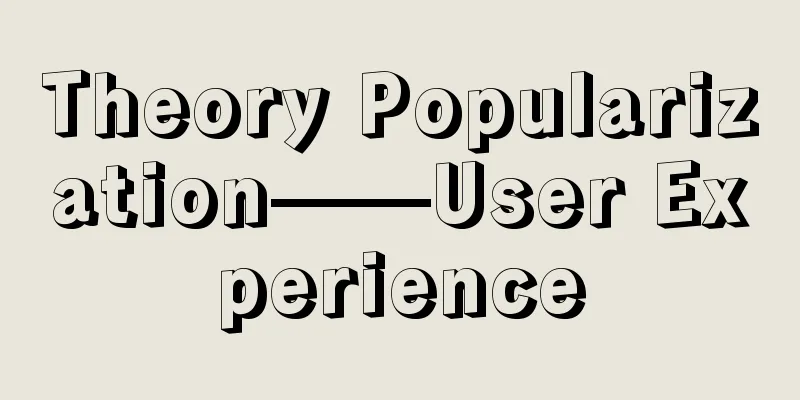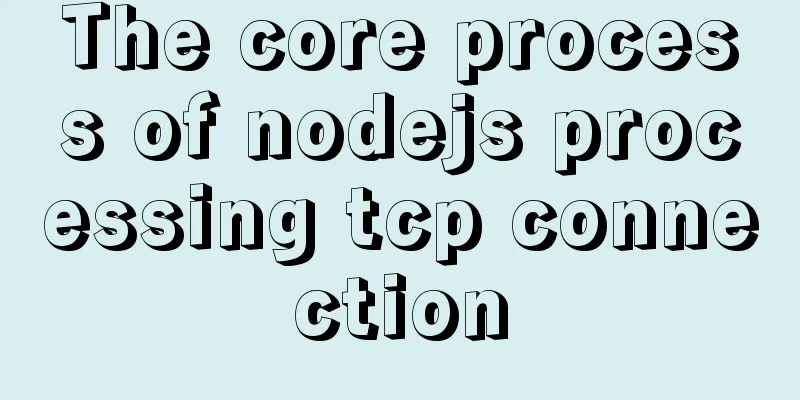Theory Popularization——User Experience

|
1. Concept Analysis 1: UE User Experience <br />It is called user experience in English , abbreviated as UE, or UX. When referring to e-commerce websites, it is also called customer experience. It refers to the overall experience a user has when visiting a website or using a product. Their impressions and feelings, whether it was successful, whether they enjoyed it, and whether they would like to come back/use it again. The level of questions, doubts, and bugs they can tolerate Attached is the original English text for reference: the user experience, mostly called "customer experience" when referring to e-commerce websites; the totality of the experience of a user when visiting a website. Their impressions and feelings. Whether they're successful. Whether they enjoy themselves. Whether they feel like coming back again. The extent to which they encounter problems, confusions, and bugs. Because it is purely subjective, it carries a certain degree of uncertainty. Individual differences also determine that each user's real experience cannot be fully simulated or reproduced through other means. But for a well-defined user group, the commonalities of their user experience can be identified through well-designed experiments. From: Baidu Knows 2. Concept Analysis 2: UE Design Step 1: Data Investigation <br />What can data bring? By summarizing the pv (product) and uv (user) of each page and path, we can get a general overview of the product usage. What's missing? Don’t understand the user, don’t understand the process. Step 2: User Interviews <br />What are the benefits? The connection between the product and the user is like a black box. Interviewing users is a process of trying to open the black box. By opening the black box, we can transform the paths between them. This allows the two to blend seamlessly. Just like studying DNA, research on the structure can reshape genes. When it comes to products, we can create products based on the user's psychological model, or use creative products to influence users. Step 3: Product Analysis <br />Even if you understand your users, can you come up with effective solutions? At this point, research on related products will be helpful. If you understand the needs of users, you can have an in-depth understanding of the product. Then the analysis of the product will help to deepen the understanding of the product horizontally. Why do two different products emerge from the same function? The differences are reflected in the overall picture as well as in the details. Through constant comparison, we will find the intricate connections between the various functions of the product and between the product and the users. Step 4: Product Positioning <br />Positioning should be decided before a product is made, but why do I propose this step at this stage? In fact, due to the preparation of the previous work. Only after understanding the users and related products can the positioning become clearer. At the beginning, I needed a positioning all the time, but it felt vague. At this moment, it is much clearer. Whether it can be changed depends on fate~~ Step 5: Function confirmation <br />Based on the analysis of users and products, some new functions will be proposed at this time. We launch each function carefully, taking into account the long-term development of the product, user guidance, and ease of use. Step 6: Information Architecture <br />The impression of the product begins to emerge in your mind. At this point, the information is injected into the product structure. Navigation, management, etc. are very important items and require extra care. In addition, different pages have different information, and information jumps between pages, and even jumps between products. Each piece of information needs to be reviewed. If it doesn't help the product or is a burden to the user, don't add it. Step 7: Page prototype <br />Personally, in the page prototype stage, in addition to using Visio to draw the structure diagram, I still unconsciously use PS to help find the feeling. This process is also an iterative process for me. Of course, the previous stages have almost formed the structure of the entire product in my mind, and this only requires putting it on paper. Confirmation of the prototype requires persistence. If you do this process yourself, and every point is thought through. Then go and convince the opposition from all sides. In fact, you have to believe that people believe in the value of thinking. As long as you make efforts, you will get rewards. The worst thing is to complain every day without making any efforts. Step 8: Visual Design <br />No need to say more. There may be a lot of things, such as icons, fonts, area division, module unification, CSS definition, style setting. Everything should reflect what has been obtained from the previous work. The steps are clear, but the process in between may be more interesting. First, you need to gain the support of the operations staff. If they are not involved, the whole process will be difficult. Through constant communication, they may be happy to work together on user interviews, etc. This depends on your communication skills. Then get support from other colleagues on the team. It is necessary to continuously demonstrate interim results, and everyone will gradually realize the role of UE work. After this experience, the team realized the function of this position and can carry out more in-depth work in the future. Previous Page 1 2 Next Page Read Full Article |
<<: CSS3 achieves cool 3D rotation perspective effect
>>: Analysis and solution of Chinese garbled characters in HTML hyperlinks
Recommend
Detailed tutorial on downloading mysql on Windows 10
MySQL versions are divided into Enterprise Editio...
Detailed explanation of the idea of xshell remote login to CentOS7 without password login
First, let me talk about the general idea: 1. Log...
Detailed example of IOS database upgrade data migration
Detailed example of IOS database upgrade data mig...
Use jQuery to fix the invalid page anchor point problem under iframe
The application scenario is: the iframe page has n...
A Deeper Look at the Differences Between Link and @import
There are three main ways to use CSS in a page: ad...
Vue implements button switching picture
This article example shares the specific code of ...
Detailed explanation of the execution process of mysql update statement
There was an article about the execution process ...
How to ensure the overall user experience
Related Articles: Website Design for User Experien...
Talk about important subdirectory issues in Linux system
/etc/fstab Automatically mount partitions/disks, ...
Using MySQL database in docker to achieve LAN access
1. Get the mysql image docker pull mysql:5.6 Note...
Solve the problem of installing Theano on Ubuntu 19
Solution: Directly in the directory where you dow...
MySQL 8.0.16 installation and configuration tutorial under CentOS7
Uninstall the old version of MySQL (skip this ste...
JavaScript to achieve tab switching effect
This article shares the specific code of JavaScri...
Linux five-step build kernel tree
Table of contents 0. The kernel tree that comes w...
MySQL 5.7.17 installation and configuration method graphic tutorial (Ubuntu 16.04)
Download the latest version of MySQL for Ubuntu L...









